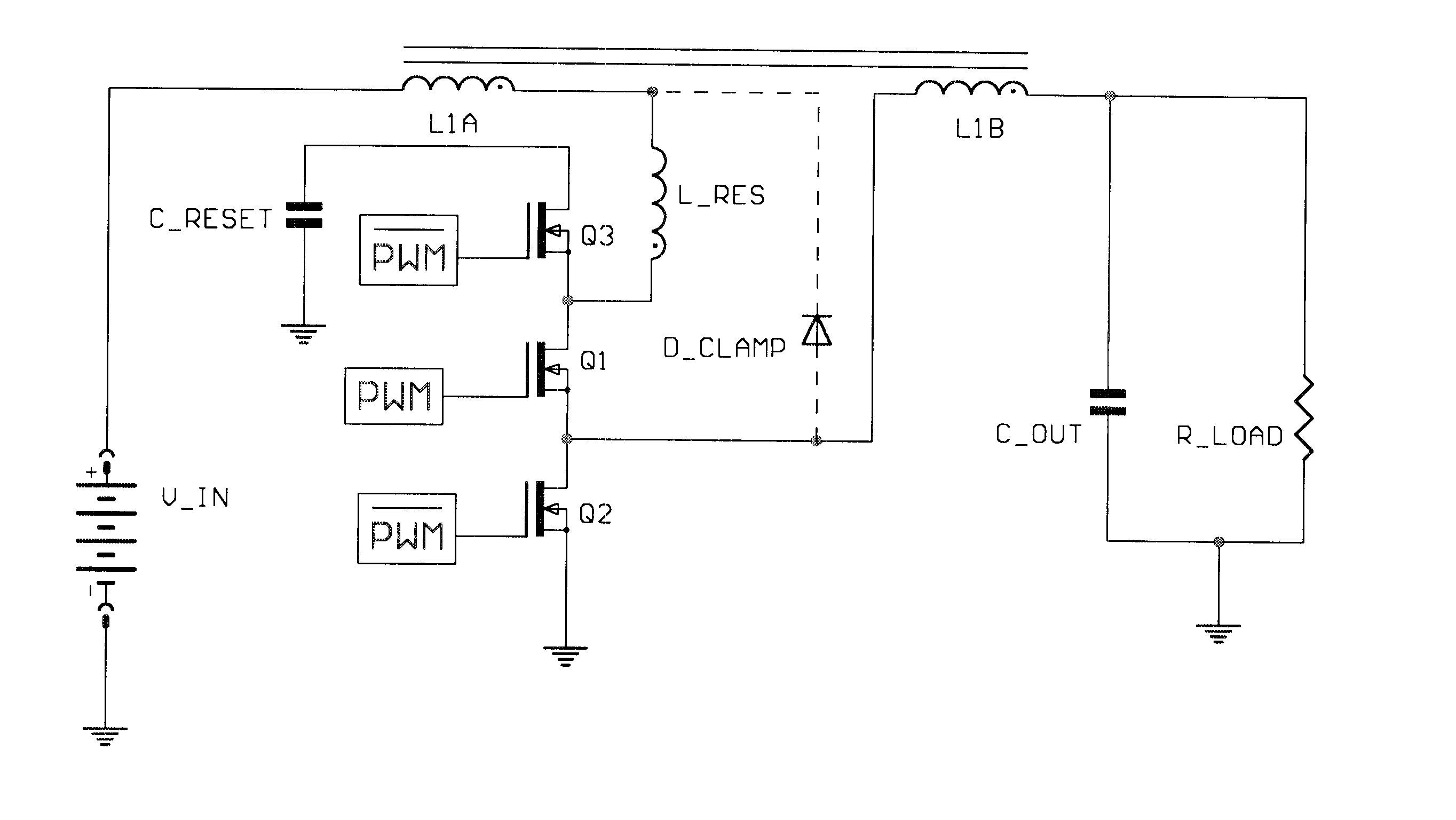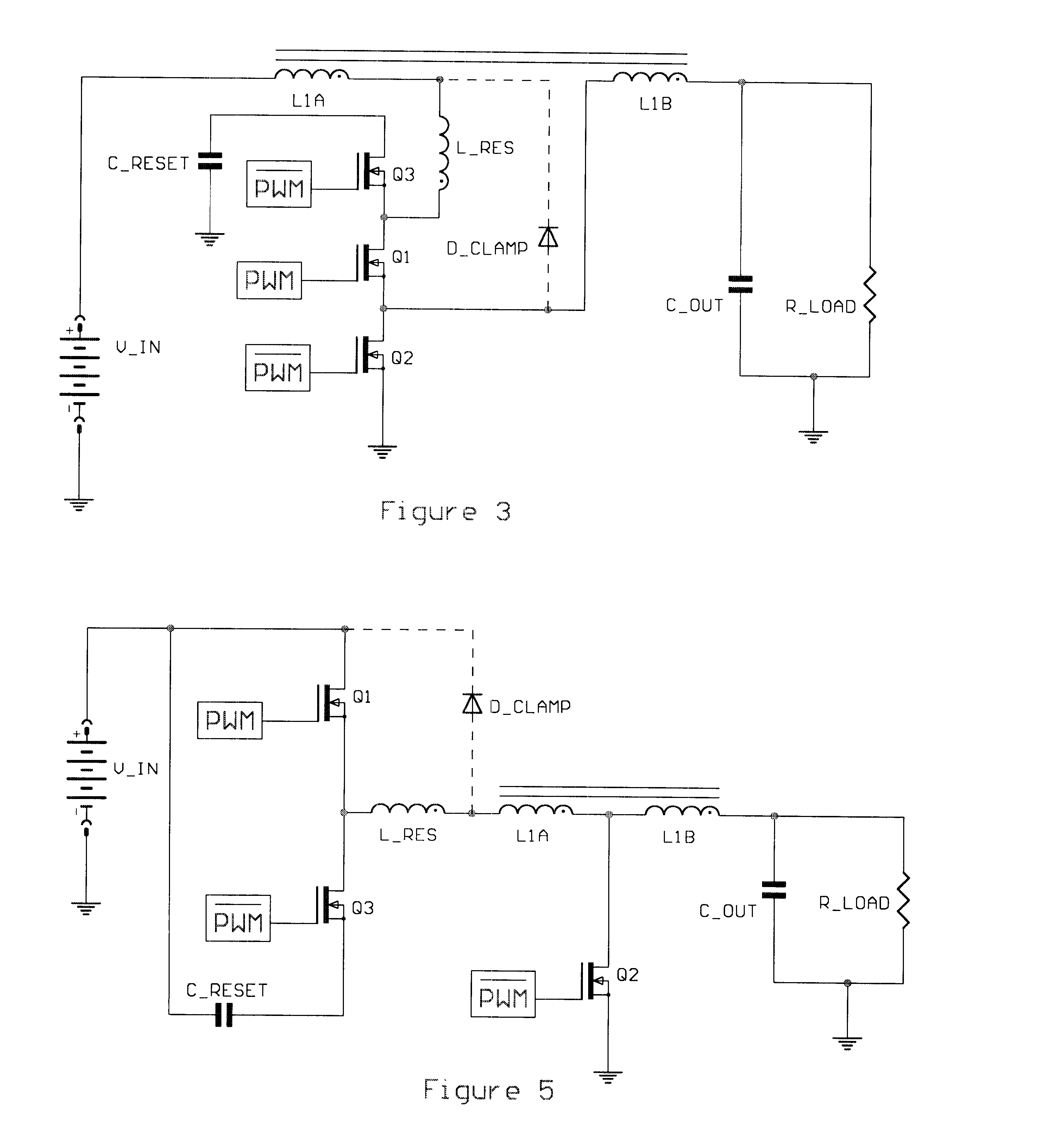Zero voltage switching power conversion circuits
- Summary
- Abstract
- Description
- Claims
- Application Information
AI Technical Summary
Benefits of technology
Problems solved by technology
Method used
Image
Examples
Embodiment Construction
FIG. 3 illustrates the ZVS tapped inductor buck converter of the subject invention. In addition to achieving ZVS for all switches the converter also achieves non-pulsating or continuous input and output terminal currents. The FIG. 3 circuit uses a ZVS cell first revealed in a pending patent whose Ser. No. is 09 / 956,711. The ZVS cell comprises a main switch, an auxiliary switch. a small auxiliary inductor, and a capacitor. By substituting the ZVS cell for the main switch in a hard switching power converter circuit the new circuit with the new ZVS cell can achieve non-pulsating terminal currents and elimination of first order switching losses.
Referring to FIG. 3, during an initial condition and on state of the circuit, main switch Q1 is on and switches Q2 and Q3 are off, current flows from the source, V_IN, through the winding L1A, through the small auxiliary inductor, L_RES, through the switch Q1, through the winding L1B, to the output terminal and the load. During the Q1 switch on t...
PUM
 Login to View More
Login to View More Abstract
Description
Claims
Application Information
 Login to View More
Login to View More - R&D
- Intellectual Property
- Life Sciences
- Materials
- Tech Scout
- Unparalleled Data Quality
- Higher Quality Content
- 60% Fewer Hallucinations
Browse by: Latest US Patents, China's latest patents, Technical Efficacy Thesaurus, Application Domain, Technology Topic, Popular Technical Reports.
© 2025 PatSnap. All rights reserved.Legal|Privacy policy|Modern Slavery Act Transparency Statement|Sitemap|About US| Contact US: help@patsnap.com



